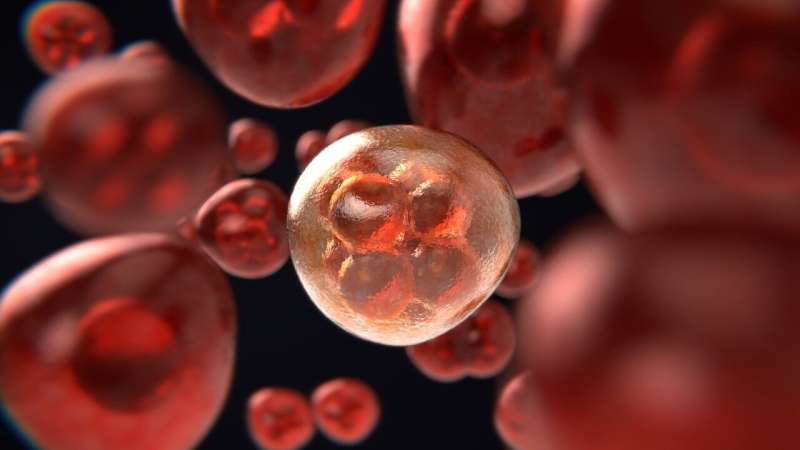Repurposing heart drugs to target cancer cells

Senescence is a cellular stress response that results in the stable growth arrest of old and damaged cells. The past decade has revealed that senescent cells play important roles in a growing list of diseases from cancer, to arthritis, atherosclerosis and many more. Previous studies have shown that the specific elimination of senescent cells with drugs or using genetic tricks makes mice live healthier for longer. Eliminating senescent cells results in improvements in fibrosis, cataracts, atherosclerosis and in more than 20 other diseases.
However, it is not completely straight forward. Navitoclax is an anti-cancer drug that can selectively eliminate senescent cells by inducing apoptosis—a type of cell death. This class of drugs are called senolytics. Navitoclax has been in clinical trials to test its potential as a new treatment for leukaemia and lymphoma—two types of blood cancer. However, it caused severe side effects such as killing platelets and macrophages in the blood. So, there is a need to identify alternative drugs that can eliminate senescent cells. The latest research published on 21 October in Nature Metabolism from the Cell Proliferation group at the MRC London Institute of Medical Sciences (LMS) has identified a new set of senolytic drugs.
After examining a library of drugs that are already used in the clinic and testing them on normal and senescent cells, the researchers identified ouabain as a potential candidate to selectively kill senescent cells. Ouabain belongs to a family of natural compounds called cardiac glycosides that include also digoxin and digitoxin. Cardiac glycosides are used in the clinic to treat cardiac arrythmias and atrial fibrillation. In this study it was found that cardiac glycosides selectively eliminate many types of senescent cells, including when senescence has been triggered by irradiation, cancer itself or chemotherapeutic drugs—such as etoposide or doxorubicin. The fact that ouabain can eliminate different types of senescent cells emphasises its potential as a broad spectrum senolytic.
Jesús Gil, Head of the Cell Proliferation group at the MRC LMS and senior author of this paper, discussed the next steps for this research:
"These drugs are already used in the clinic, so they could be repurposed to treat a long list of diseases including cancer. This is something we are keen to explore with our clinical collaborators. Moreover, many patients are being treated with digoxin and an epidemiologist could look retrospectively and ask the question of whether those patients who were treated with digoxin are doing better than those who weren't."
Jesús Gil added about the importance of collaboration in achieving these results:
"As always, this study would not have been possible without the work of many people in my lab, led by Ana Guerrero, and collaborators all across Europe. But I want to highlight the importance of close collaboration inside the LMS. Thanks to Dominic Withers, Santiago Vernia and Anthony Uren we were able to test the effect of ouabain in old mice, precancerous lesions in the liver and upon radiotherapy, increasing the relevance of our results".
More information: Cardiac glycosides are broad-spectrum senolytics, Nature Metabolism (2019). DOI: 10.1038/s42255-019-0122-z , nature.com/articles/s42255-019-0122-z



















